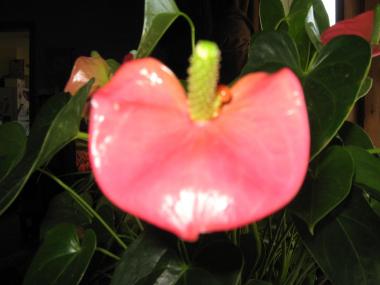Ask the Expert: Do you know what the plant I describe is?
Have a small plant that was originally part of an arrangement. Has been replanted into its own pot. Grows slowly. Had for a few years. This year October it started to grow a few (3 or 4 so far) red pod like “flowers” for lack of a better word. The leaves are grass green and large. It looks like each one is on a separate stem like a shrub. The pods looks like a rolled up bigger flower more than like a chili pod, but are bright red. Kinda open in the back of each pod. Stems are thick. What do I have? Joanne


 Find Your
Find Your 




 but on a larger scale. This arrangement contains bird of paradise, anthurium, protea, horsetail, hypericum, curly willow & monstera.
but on a larger scale. This arrangement contains bird of paradise, anthurium, protea, horsetail, hypericum, curly willow & monstera.




